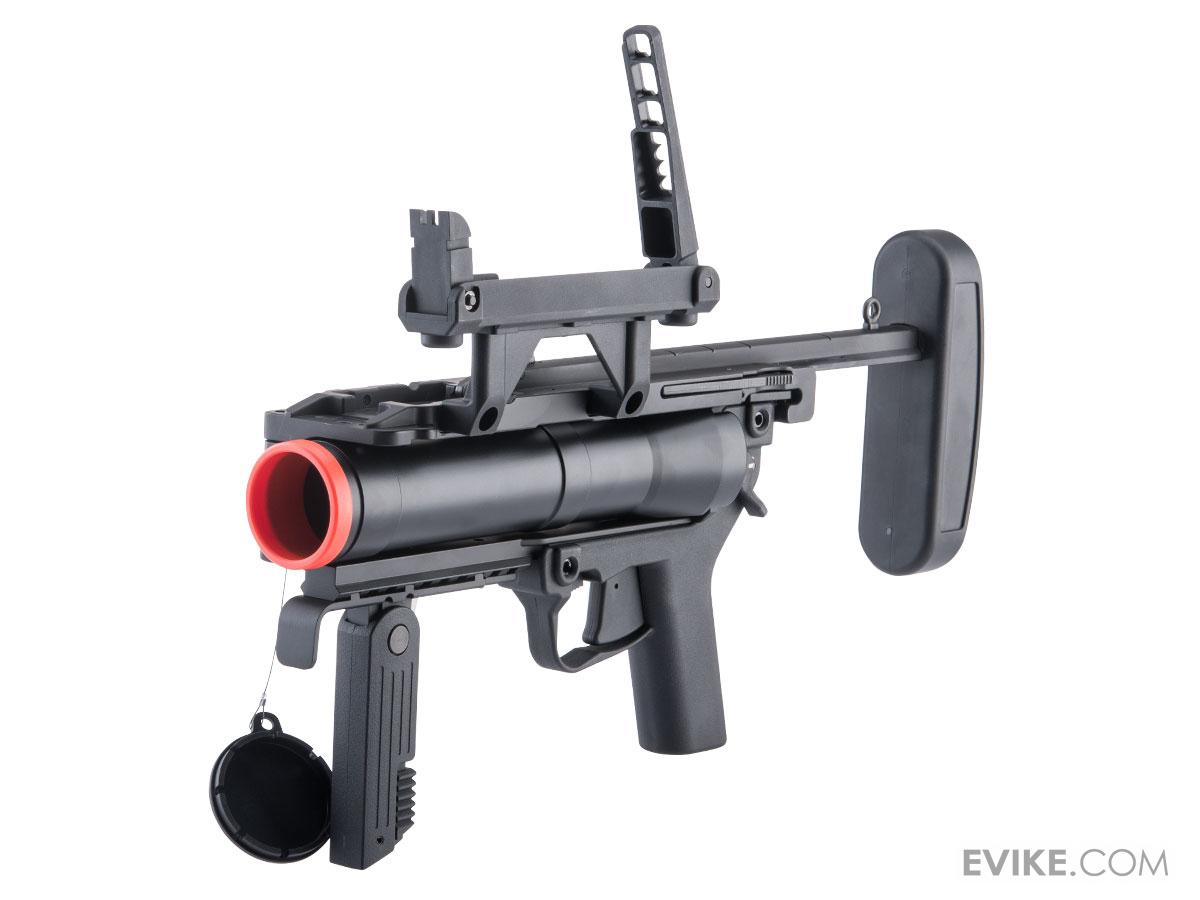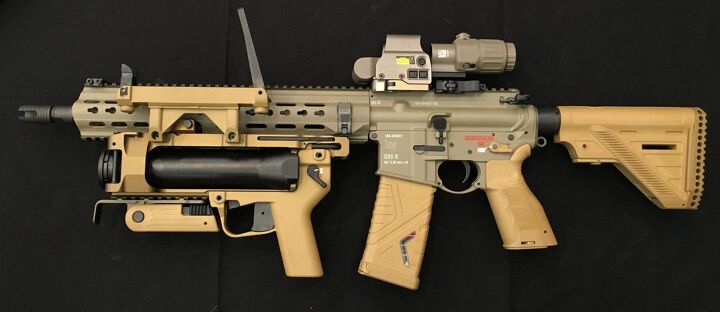M203 Vs M320 - Soldiers Can Prepare to Say Goodbye to Standard M203s and M320s: The Army Is Officially on the Hunt for a New Grenade Launcher
Soldiers can prepare to say goodbye to their standard M203s and M320s—the Army is officially on the hunt for a new grenade launcher.
M203 Vs M320
The Army Contracting Command issued a source search notice on Thursday on behalf of the Individual Weapons Product Manager seeking a new "Precision Grenadier System," or PGS, with "increased lethality and accuracy " compared to legacy 40mm systems.
M320transfer Free Lower Hanging Handheld Soft Bomb Grenade Launcher Smart Bombgl1a M203 Mgl Gl06 M79
The ideal PGS is described as "a portable integrated weapon system that enables precision engagements to destroy personal targets in close quarters and in the open," according to the notice, with the system capable of engaging targets at ranges between 300 and 500 meters
According to specifications detailed in the notice, the proposed PGS system will be significantly larger than the now-standard M320 (which measures 11.8 inches and 5 pounds), measuring and weighing a maximum of 34 inches and 14.5 pounds, according to documents of the Army
"The Army envisions the PGS to be an ambidextrous precision combat weapon that destroys personal targets in close quarters and in the open with greater lethality and accuracy compared to the legacy M203/M320 grenade launchers," said Peter Rowland, PM spokesman Soldier Lethality. Task and purpose.
However, what is truly distinctive about the proposed PGS is the choice of ammunition: the system provides for a set of ammunition beyond those normally used to attack targets in cover, including rounds specially designed to counter "armored targets light" and "floating unmanned aerial targets". system] goals,” according to the notice.
M203 Grenade Launcher Bubble Free Stickers
In fact, armor-piercing projectiles should be able to penetrate a light armored vehicle at a minimum distance of 500 meters "with armor penetration between 1.0 and 2.0 inches at 90 degrees of homogeneous armor," according to the notice .
In terms of taking on our enemy drones, the anti-UAS round should be "capable of defeating small UAS systems at 300 meters," according to the notice.
"If successful, these rounds would provide new specialized capabilities for warfighters that do not currently exist," Rowland told Task & Purpose.

The Army began fielding the M320 in 2009 before later upgrading to the M320A1 that mounts under the M4 carbine, according to Military.com. According to Army budget documents, the service has spent more than $270 million on more than 45,000 M320 systems and accessories since then.
How America's M203 Grenade Launcher Made Infantry Even Deadlier
The timeline for testing and fielding a proposed new grenade launcher is unclear at this time: the notification of solicited sources does not constitute a formal request for proposal.
Adopts the new PGS, it will take at least a decade for the Marine Corps to get its hands on it, and it will likely have a chance to test the new system on the battlefield before then.
Jared Keller is the managing editor of Task & Purpose. His writing has appeared in Aeon, Los Angeles Review of Books, New Republic, Pacific Standard, Smithsonian, and The Washington Post, among other publications. Meet the author here. The M203 series grenade launchers are light, single-shot, breech-loading, pump action (slide barrel) shoulder-fired light weapons. The grenade launcher consists of the following: barrel, receiver, handguard, blade sight and quadrant sight.
It has a quick release mount for use with M4 and M4A1 carbines that have the M4 rail system and with M16A4 rifles that have the M5 adapter rail system.
Hk Glm 40mm Launcher
The weapon uses a high-low propulsion system to fire a 40mm round. The firing pin strikes the primer, the spark of which ignites the propellant in the brass powder charge cup inside the high-pressure chamber. The burning propellant produces a chamber pressure of 12,000 psi, which ruptures the brass powder charge cup at the vents and allows gases to escape into the low-pressure chamber in the cartridge case. There, the pressure drops to 3000 psi and propels the grenade from the muzzle at 250 fps. The right turn of the 3,700 rpm grenade stabilizes it in flight and applies enough rotational force to arm the fuze.
The weapon is unloaded with the barrel open and fired with the bolt closed. It must be framed before it can be placed in the safe.
Ammunition for the M203 is issued as a complete fixed round. Click here for more information.

For short-range targets (31 meters (102 feet) or less), put the blade sight down and use rifle sights. Calculate the distance to the target and be sure to aim at the foot of the target (M576 round).
Why America's Marines Love The M203 Grenade Launcher
For targets 50 to 250 meters (165 to 820 feet), raise the blade sight and use it with the rifle's front sight. For targets 50-400 meters (165-1320 feet), use the front and rear sights of the quadrant sight only.
The launcher can be fired standing, kneeling, or upside down. When shooting at long range from a prone position, place the weapon on the ground. For all other positions, hold the material firmly against your shoulder.
When firing high explosive (HE) grenades at targets within 165 meters (541 feet) (safe minimum), stay in a protected position. When training (minimum safe), do not fire at targets within 165 meters (541 feet). When in combat, do not fire at targets closer than 31 meters (102 feet).
The M203 has the inherent accuracy to place grenades in windows at 125 meters (410 ft) and bunker openings at 50 meters (164 ft). These ranges decrease significantly as the obliquity angle increases. Combat experience shows that M203 gunners cannot consistently hit windows at 50 meters when forced to aim and fire quickly. Here's what you need to know: This grenade launcher is getting a little old, but it's still a powerful weapon.
Us Grenade Launchers: M79, M203, And M320
One of the most powerful weapons available to US Army and Marine Corps infantry is a grenade launcher designed to fit under the M16 rifle.
The M203 grenade launcher gave soldiers unprecedented grenade range in a compact and durable package. The weapon, introduced in the last days of the Vietnam War, is only now being replaced by a similar new one.
In the late 1950s and early 1960s, the US Army overhauled its arsenal of infantry weapons. Overlooked for upgrades as the service prepared for nuclear war, it gradually became extremely obvious that the M-1 Garand and other small arms left over from World War II were painfully outdated, especially in the light of Communist Bloc weaponry such as the AK-47. .

One of the new weapons designed to increase infantry firepower was the M79 grenade launcher. The M79, a single-shot weapon that resembled an oversized shotgun, could launch a 40-millimeter high-explosive grenade up to 350 meters, or where American weapons like the new M-14 were beginning to lose effectiveness. The new M79 effectively gave squads and squads their own hand-held artillery, capable of launching high-explosive rounds well beyond the traditional range of hand-thrown grenades.
File:austeyr F88 M203.jpeg
The M79 proved to be a valuable weapon during the Vietnam War and validated the concept of the grenade launcher. Still, there were shortcomings. While a useful weapon, a squadron or pilot issuing such a weapon would lose the grenadier as a rifleman, and the grenadier generally only carried an M1911A1 pistol as a handgun. The M79 exchanged targeted fire for area fire.
Why, the Defense Department asked, couldn't a single soldier have a weapon system capable of both point and area fire? The M79 had a short, stubby barrel, and perhaps there was some way to mount a grenade launcher under the new M16 rifle, specifically in front of the magazine well and parallel to the rifle barrel. A weapon that used existing M79 rounds and attached to the M16 would be ideal.
Several designs were offered for the Pentagon's underbarrel grenade launcher, including prototypes from AAI Corporation, Ford Motor Company, Colt, and the government's Springfield Armory. Colt's design, the CGL-4, advanced to become the XM148 grenade launcher. While the XM148 accepted M79 rounds, it also suffered from numerous problems, including complexity, cracks in metal parts, sight problems, and too much force required to cock the weapon. After some testing in the jungles of Vietnam, the service recommended retiring the XM148 and bringing back the M79.
However, the return of the M7 did not mean that the search for under-barrel grenade launcher service was over. AAI Corporation, formerly Aircraft Armaments Incorporated, had developed a 40mm pump-action grenade launcher not designed for the M16 but which could be adapted for the role. The weapon, known as the XM203, faced larger and more complicated designs from Aero-Jet Corporation, Philco-Ford's Aeronutronics Division, and again, Colt. The XM203 comfortably won the competition on the basis of "superior performance and lower cost" and was selected for adoption. The XM203 could also use M79 rounds, saving the military the hassle of developing and fielding new grenades.
Army Wants, New High Powered Grenade Launcher For Drones
The XM203, later M203, was a pump-action weapon that secured itself to an M16A1 rifle by means of a distinctive metal cover that fitted over the existing rifle pistol. The grenade launcher was loaded by pushing the barrel forward and inserting a 40 millimeter grenade into the chamber. Pulling the handguard back he cocked the gun, and was now ready to fire. The M203 had a separate trigger that fired the
Craftsman m320, hp m203, aglex m320, m320, leica m320, m320 holster, toshiba m203, bridgestone m203, logitech m320 vs m325, vapalux m320, m203 toner, atrust m320
0 Comments